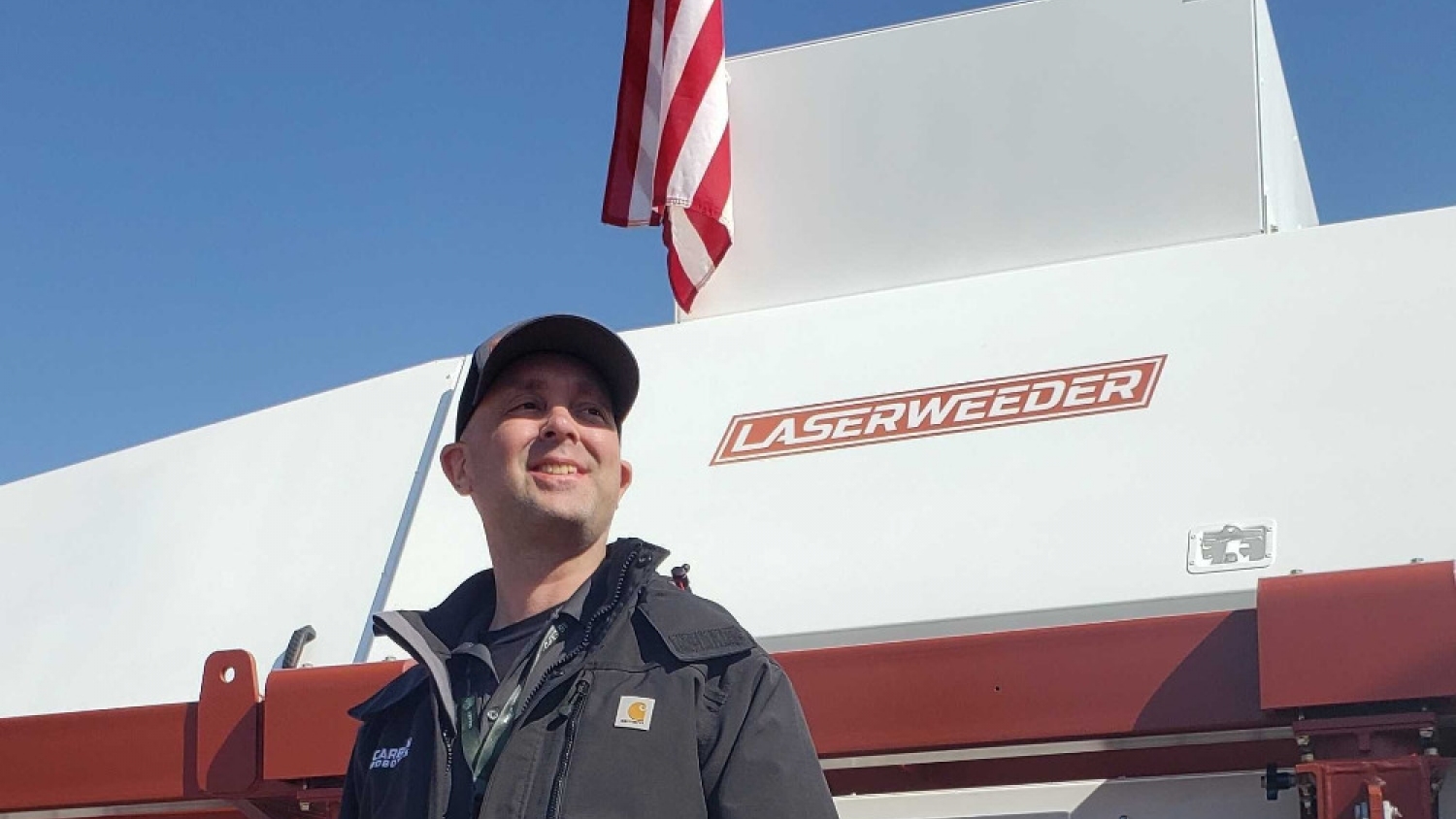
In the United States, Paul Mikesell, founder and CEO of Carbon Robotics, is steering one of agtech’s most ambitious companies through an era of tightening venture capital and rising demand for on-farm automation. Following the firm’s $20 million Series D-2 extension round, led by Giant Ventures, Mikesell shared insights with AgFunderNews about the company’s new AI-driven robot, expansion strategy, and advice for startups navigating today’s challenging investment climate.
The fresh round of financing will be directed toward an unannounced AI-powered agricultural robot, separate from the firm’s flagship G2 LaserWeeder. “We’re targeting it specifically towards a new product, something not yet released,” said Mikesell, confirming that it leverages the same artificial intelligence infrastructure as the LaserWeeder to perform “more interesting work for farmers.”
The LaserWeeder, which uses computer vision and laser precision to eliminate weeds without chemicals, has become one of the most recognized pieces of farm automation equipment in specialty crop production. With the G2 model released in early 2025, Carbon Robotics is now reaching smaller farms through a six-foot modular version designed for single-row operations.
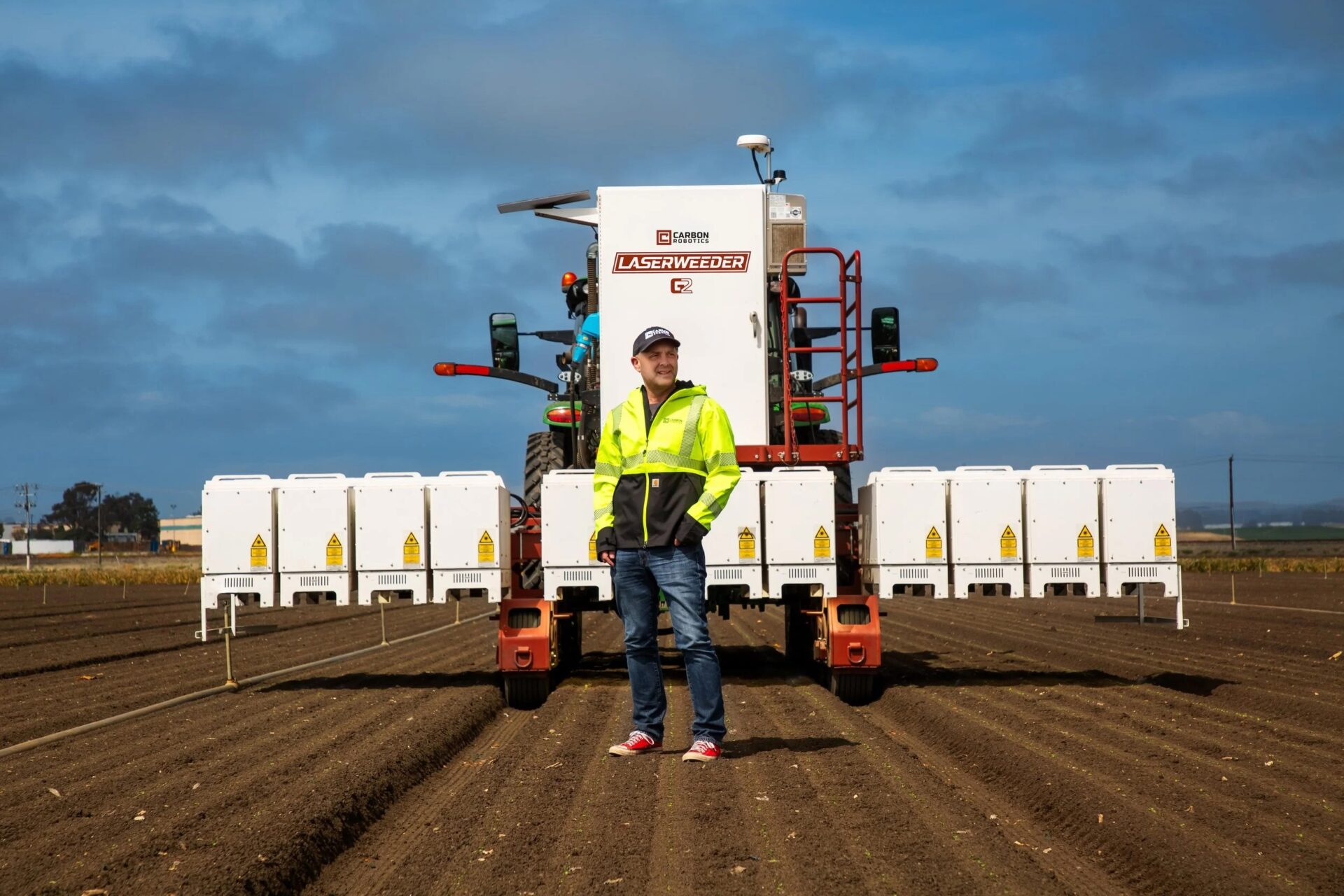
According to Mikesell, the company continues to explore even smaller models: “For much smaller farms—10 acres, for example—we might develop something that uses one or two modules. That’s still to be determined.”
While agricultural robotics has traditionally catered to large-scale growers, Carbon Robotics aims to make automation accessible to medium and small operations. Mikesell argues that adoption depends less on size and more on return on investment (ROI). “Our machines pay for themselves in one to three years,” he explained. “If it makes money, then it’s just about right-sizing the machine for the operation.”
The G2’s modular architecture enables flexibility for farms of various scales, balancing cost-efficiency and performance. Some growers operating 50-acre farms are already seeing profitability, while future versions could bring the technology to smaller holdings.
Unlike most ag equipment manufacturers, Carbon Robotics bypasses traditional dealership networks, opting instead for direct sales and financing partnerships in the U.S. and Europe. This choice allows for closer customer relationships and better control over maintenance, Mikesell said.
“We don’t use dealerships,” he noted. “It’s better for the farmer to have a direct relationship with our team because the technology is complex—lasers, optics, computers. It’s not something that local dealerships can easily service.”
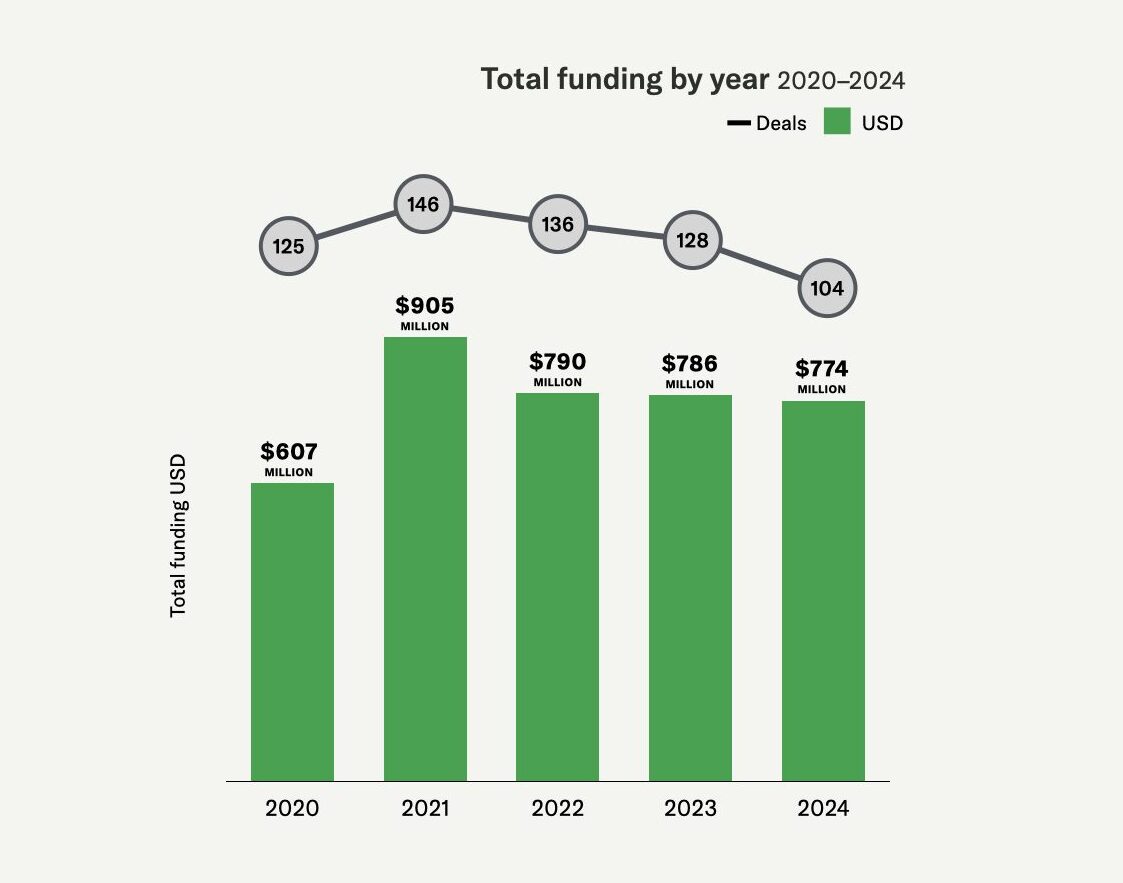
While the approach increases travel and logistical costs, it avoids the pitfalls that have hampered other agtech startups. Mikesell warned founders to “be careful about the terms of any dealer distribution contract”, citing examples of startups that lost access to their own markets after signing restrictive agreements.
“The agriculture channel opportunity just isn’t there yet,” he added. “Most dealerships are set up to sell the same tools they’ve sold for decades. They don’t know how to communicate the benefits of new technologies.”
As venture capital funding tightens across the tech landscape, Mikesell emphasizes that agtech entrepreneurs must learn how to position their companies strategically. “The funding is there—you just have to prove ROI and get customers to talk about your product,” he said.
Mikesell believes that how startups frame their narrative is crucial: “We present ourselves as an AI robotics company. If you walk into a VC meeting and say you’re an agriculture company, most investors won’t understand. At best, they’ll be confused; at worst, they’ll be uninterested.”
Instead, he advises founders to highlight their technology’s scalability and profitability in language that resonates with investors. “It’s about storytelling,” he said. “If customers can say, ‘If I had this, I would buy it,’ that’s your kindling to start a fire.”
As part of its growth strategy, Carbon Robotics has brought manufacturing in-house, a move that has significantly increased product margins and reduced reliance on third-party contractors. “When you pay a contract manufacturer, they take a cut. Now we control the process, and that value stays with our team,” said Mikesell.
The company recently opened a production facility in the Netherlands to serve European clients, a move accelerated by international trade tariffs. “It wasn’t our initial plan to move that fast into Europe, but it’s been a positive development,” he said. “Now we have an excellent local team and diversified production capacity.”
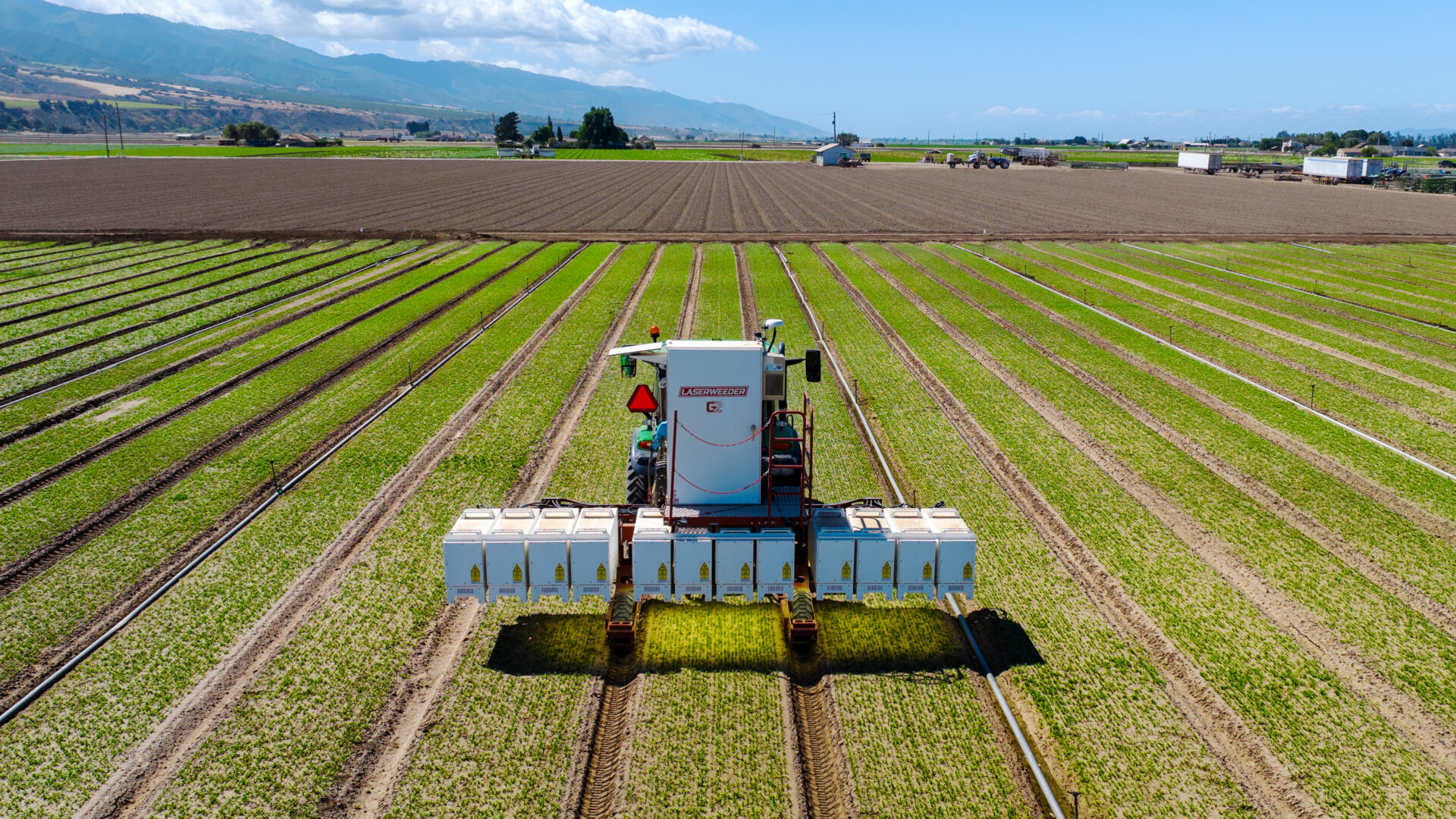
With sales operations expanding across the U.S., Europe, and Australia, Carbon Robotics is scaling both its AI and engineering divisions to support what Mikesell calls “Project Three,” another major innovation in the pipeline.
Mikesell foresees a future where Carbon Robotics’ core AI technology extends beyond agriculture into other industries. “Our products rely on AI and computer vision—systems that understand the world around them and take action,” he explained. “That’s applicable to many sectors.”
While agriculture remains the company’s foundation and passion, diversification could help offset the cyclical nature of farming. “At some point, we’ll explore those other applications,” Mikesell said. “But for now, we’re focused on helping growers solve real problems.”
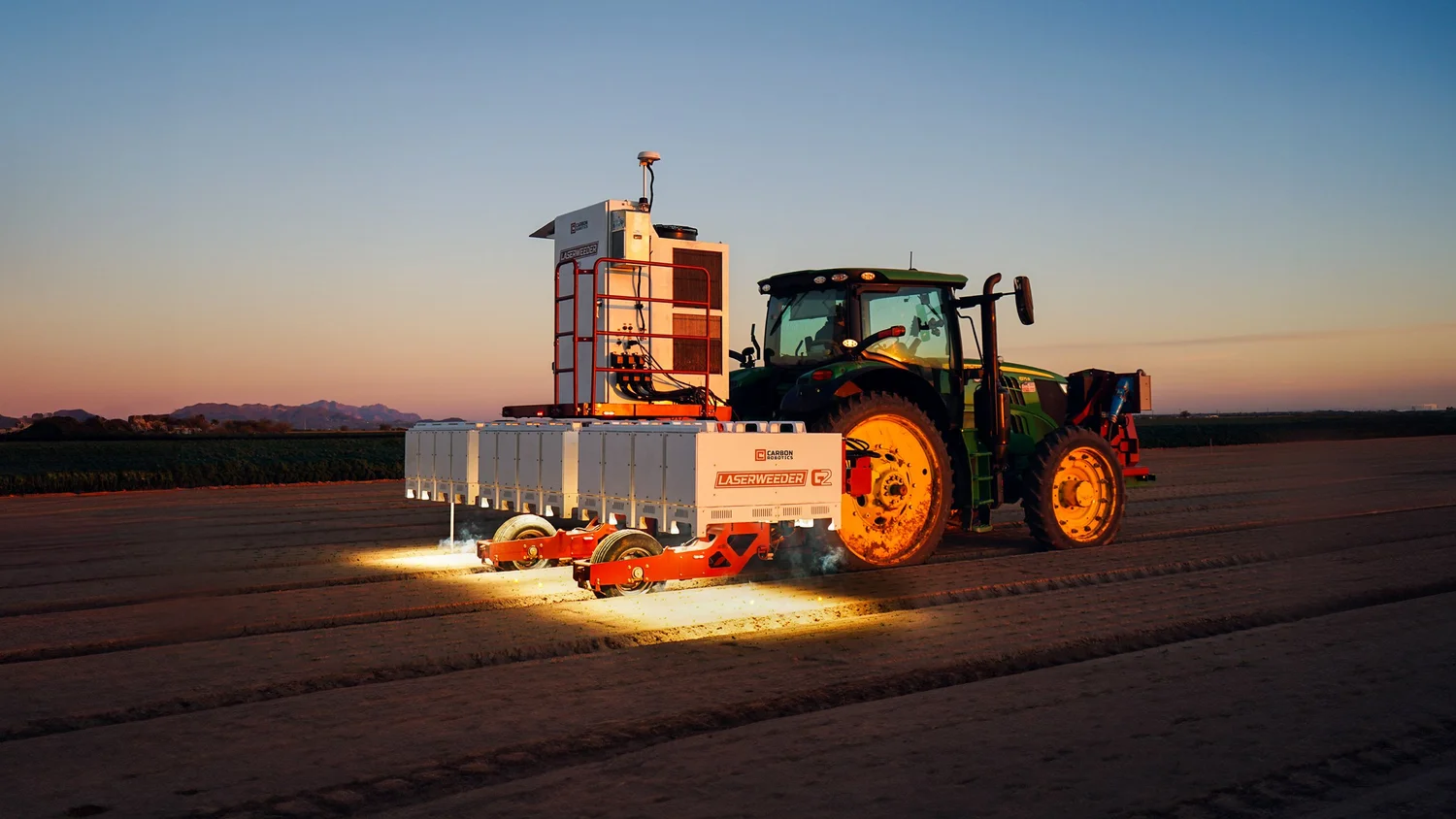
Despite a cooling investment environment, Mikesell remains optimistic about the long-term potential of agricultural robotics. The combination of labor shortages, rising input costs, and sustainability pressures continues to push farmers toward automation, and Carbon Robotics aims to be at the center of that transformation.
Yet his closing message to founders was one of prudence and clarity: “Be careful how you talk about it,” he advised. “Know your audience, show the impact of your technology, and let your customers tell the story for you.”
